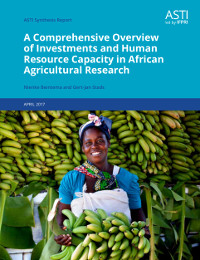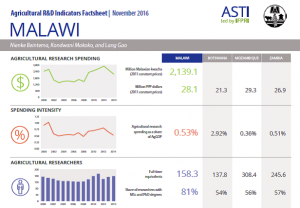 A new report on agricultural research in Africa south of the Sahara by Agricultural Science & Technology Indicators (ASTI), asserts that—despite progress towards the regionwide commitments of the Comprehensive Africa Agriculture Development Programme (CAADP)—agricultural research investment in the region is growing more slowly than spending on other agricultural areas, such as farm support, subsidies, and irrigation.
A new report on agricultural research in Africa south of the Sahara by Agricultural Science & Technology Indicators (ASTI), asserts that—despite progress towards the regionwide commitments of the Comprehensive Africa Agriculture Development Programme (CAADP)—agricultural research investment in the region is growing more slowly than spending on other agricultural areas, such as farm support, subsidies, and irrigation.
The data cover key indicators on agricultural research investments, human resource capacity, and research outputs in the region. The report also finds that that human resource capacity for agricultural research remains inadequate, and that many countries are highly dependent on volatile donor funding. New national spending targets for agricultural research, based on ASTI analysis of each country’s economy and agricultural sector, show a considerable gap between what countries are—and realistically could be—spending.
Key findings from the report include the following:
- As of 2014, half the region’s PhD-qualified agricultural researchers were in their 50s and 60s, thus reaching retirement age. Training and capacity building is needed to avoid capacity gaps that could jeopardize future research outputs.
- Agricultural research in the region remains highly dependent on donor and development bank investment, which can be volatile and unsustainable. National policy makers need to diversify their funding sources.
- New ASTI analysis of national spending targets based on characteristics of each country’s economy and agricultural sector show a considerable gap between what countries are—and realistically could be—spending on agricultural research.
The latest ASTI Malawi factsheet can be downloaded here. Read the full 2017 report, access data, and compare country findings through ASTI’s online tools on the ASTI website.

